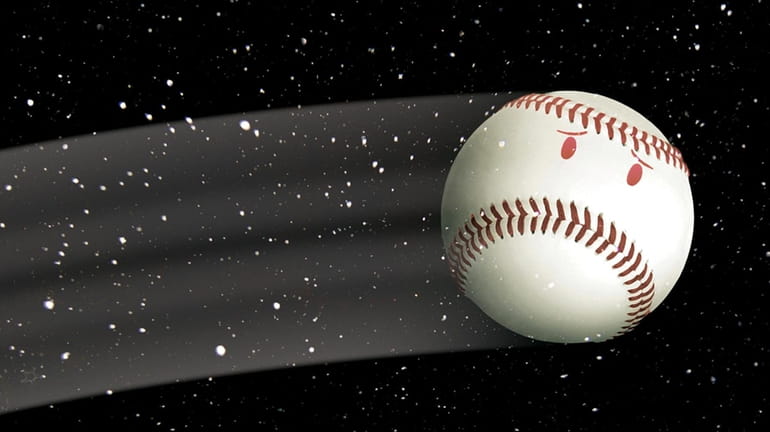Burns: Little league and the curveball are a foul mix

The tacit encouragement by too many coaches of the curveball shows not only a woeful lack of concern for their charges, but a desperate loss of baseball imagination. Credit: Tribune Media Services / M. Ryder
Little League Baseball is kicking off across Long Island this month, and you can practically hear the pressure being applied by some competitive coaches or otherwise well-meaning parents. Just as likely, it comes from a young player's inner voice as he strives to succeed on the pitcher's mound: the urge to throw a curveball, one of the most devastating trick pitches.
In the past 30 years, medical evidence has shown that the curveball is essentially just damage waiting to happen, particularly when it's thrown by a child.
Back when I was about 10, we'd work hard to make a Wiffle ball do all sorts of neat perambulating tricks. But the perforated orb was designed to make a pitch dip when thrown with the proper grip and a fluid motion. No perilous twisting of or "pulling on" the forearm, shoulder or elbow muscles -- what makes trying to cause a hardball to "curve" so potentially dangerous -- was necessary.
Some older baseball instructional videos demonstrate how to throw a curveball, while emphasizing that no one younger than 16 should throw the pitch. But in any era, that was like telling a kid not to think of what he'd most like for the holidays.
Once upon a time, our Little League coaches, in legitimate games, refused to let us throw any pitch that could cause undue stress on our arms. It's startling, today, when watching youth baseball, to see how many curveballs are being thrown. What has changed?
Little League headquarters in South Williamsport, Pa., refuses to outlaw the pitch. Little League's governing board does concede that injuries can come from too much pitching -- and has mandated pitch-count limits and days of rest -- but it doesn't believe that any particular kind of pitch is more dangerous than another. It cites a 2009 study it commissioned by researchers at the University of North Carolina, as well as earlier studies, suggesting that it's not the curveball, but incorrect mechanics, that can harm a kid's arm.
But how many 8-, 10- or 12-year-olds can always use the proper form?
And exactly which amateur coaches -- usually parents and others simply hoping to share good times with the younger generation -- can provide the expertise necessary to evaluate a pitcher's performance?
Scientists and doctors affiliated with the American Academy of Pediatrics believe that the 2009 UNC conclusions were generally valueless because they were based on laboratory tests, and not on game conditions. They say that UNC also didn't test the effect of throwing a curveball on an arm that was already tired or otherwise stressed.
These doctors continue to recommend banning the curveball for athletes before they turn 14, or reach puberty.
A curveball embargo would be no great loss, because there are many other terrific pitches that emulate a breaking ball's action, with no undue wear on a child's arm: the palm ball, the "nickel" curve, the forkball and the knuckleball.
This arsenal has the advantage of being thrown mostly with a straightforward, fastball motion, and poses no threat to a junior hurler, other than what an opposing batter can do with it.
Several studies presented at the 2010 annual meeting of the American Academy of Orthopaedic Surgeons found that throwing-arm injuries are on the rise in Little League and other youth baseball programs. There is now a growing number of teenagers having to get the type of arm surgery once reserved for the most grizzled major leaguers. Is the curveball to blame?
Certainly, we are seeing the fruition of some leagues and travel teams trying too much to emulate collegiate and professional sports, rather than emphasizing more of the fun aspects we used to associate with youth athletics. At the very least, the tacit encouragement by too many coaches of the curveball shows not only a woeful lack of concern for their charges, but a desperate loss of baseball imagination.
James H. (Jim) Burns, a writer and actor living on Long Island plays amateur baseball throughout New York.
